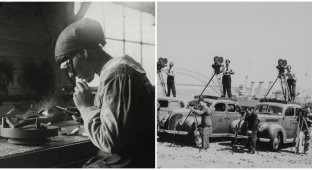Carnyx - an ancient psychological weapon of war (5 photos + 1 video)
Carnyx is a wind musical instrument, without which it was once impossible to imagine a Celtic battlefield. ancient the Celts used it as a psychological weapon during the period between 300 BC e. and 200 AD e. in Western and Central Europe, and also outside. 
The musical instrument was a long bronze tube with bends at both ends. The lower end of the tube had a mouthpiece, and the upper one expanded into a bell, usually decorated with something like an evil boar muzzle. Historians believe that in order to intimidate this boar the head had a moving tongue that flapped up and down, making the noise louder, issued by the instrument. The warriors carried carnyxes that stuck out vertically, and blew them with all their might - the more terrible noise that reduces enemy morale, the better!
The Carnyxes were used by groups of Celtic mercenaries; about him references have been preserved among ancient historians - these noisy "pipes" were heard during the attack on the Greek sanctuary at Delphi in 279 BC. e., and in Gaul during the battle with the troops of Julius Caesar. With them Claudius also encountered when he invaded Britain. There is even a picture carnyxes on Buddhist sculpture in India - in the Iron Age people also sometimes climbed very far from home. Physically, not a single whole the carnyx has not survived, but there are about a dozen of its fragments and many images.
Carnyx was used not only by the Celts, but also by the Dacians. - Thracian tribes that lived on the territory of modern Romania and Moldova. The term "Celtic" is generally not simple. Picture of pan-European Celtic culture is a myth; rather, aspects of art and technologies were common to different cultures over vast distances. Carnyx is one example of this. 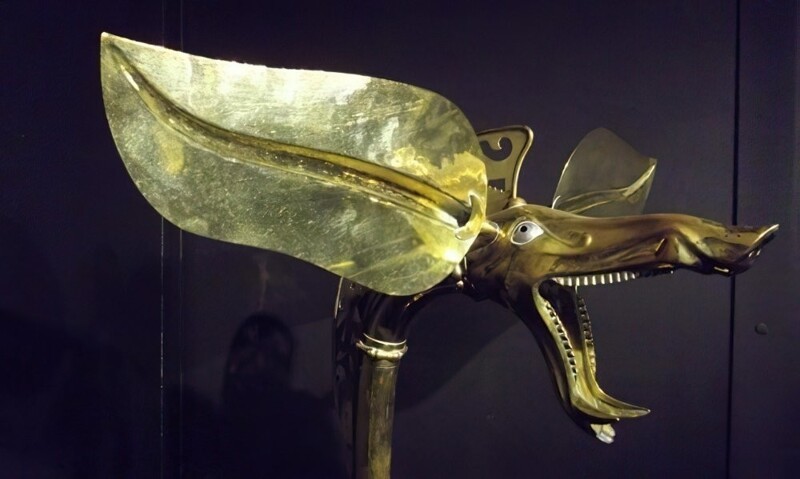
The Greek historian Polybius (206-126 BC) vividly described how the Celtic troops terrified the Romans at the Battle of Telamon (225 BC). BC e.):
... on the other hand, the Celts frightened them with battle formation and noise. Indeed, the number of trumpeters and pipers they had was unimaginable great, and when the whole army sang a war song at once, he rose such a strong and unusual noise that not only sounds were heard flutes and the voices of warriors, but the very surroundings seemed to sound, repeating echoes.
And the Roman historian Diodorus Siculus in about 60-30 BC. e. wrote the following:
In addition, their pipes are unusual in a barbaric way; blowing at them they make a nasty sound that goes so well with the rumble battles. 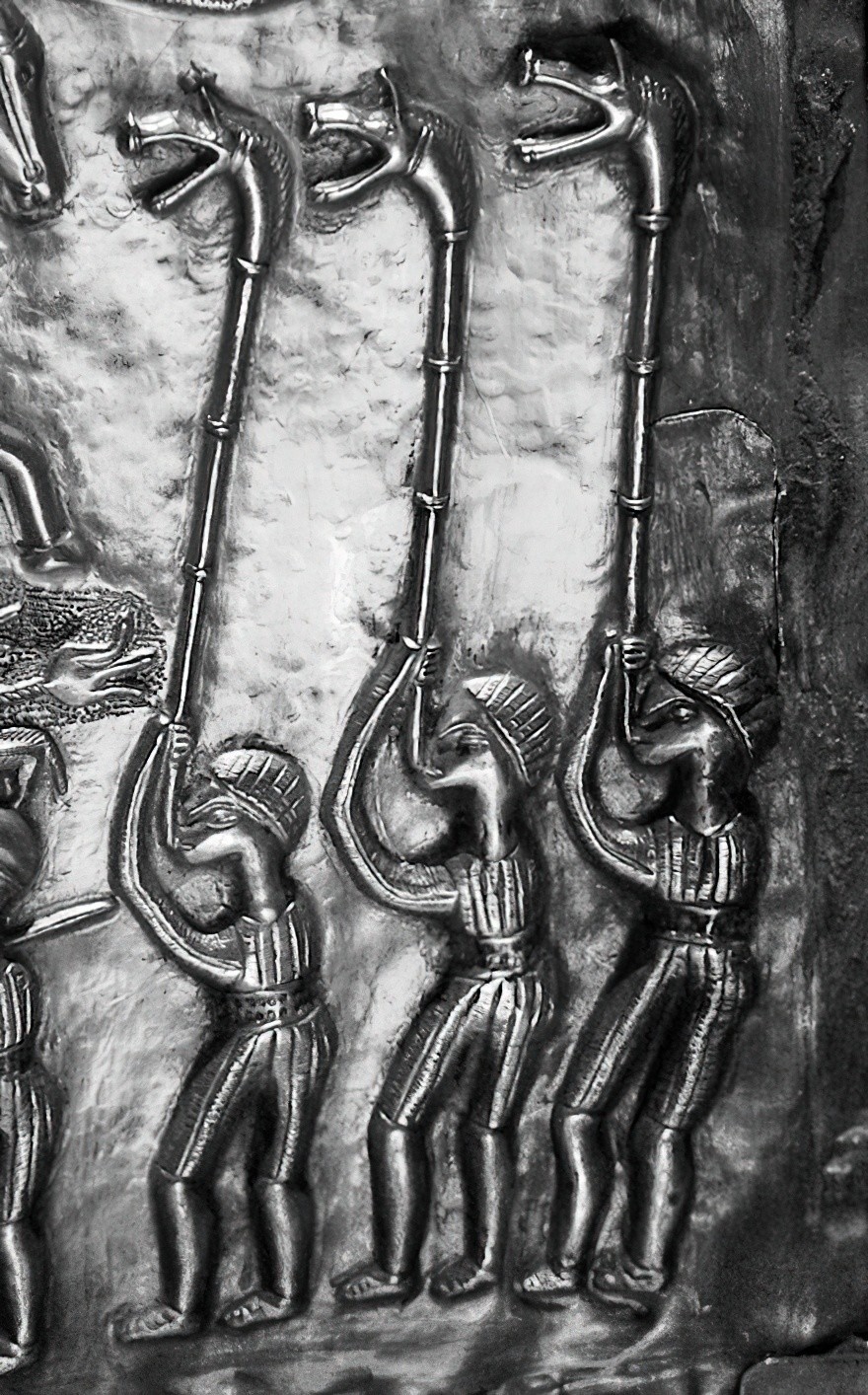
Image on the Gundestrup cauldron
In 2004, archaeologists discovered the treasure ritually destroyed weapons, including a dozen swords, scabbards, arrowheads spears, a shield, bronze helmets, an iron helmet in the shape of a swan, a cauldron, animal remains and seven carnyxes. Before the opening of the Gallo-Roman sanctuary in Tintignac (France) were found the remains of only five real carnyxes. 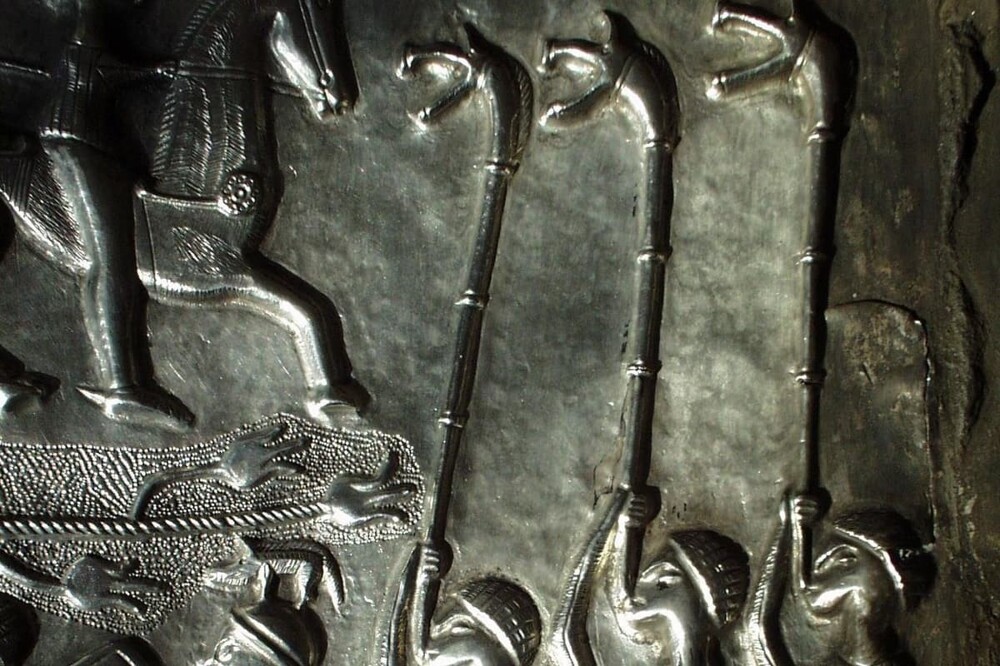
The best preserved of these was found at Deskford, Scotland, in 1816. The Deskford carnyx has only a bell on the head of a boar, and the mane, tongue and pipes are missing. Also found images of trumpeters playing the carnyx. On a Roman denarius 48 BC n. e. pictured is a carnyx. Three trumpeters with carnyxes figure prominently in image on a silver cauldron from the Gundestrup, which was found in Danish peat bog. 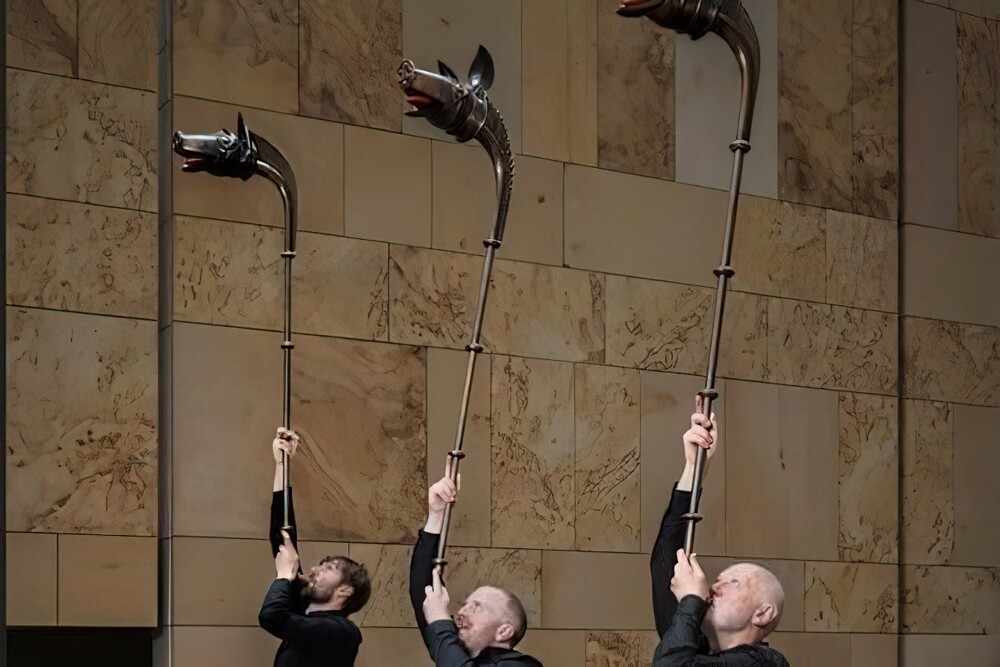
On the other hand, one of the seven carnyxes found in Tintignac, could be composed of fragments almost entirely. He was divided into 40 parts. When this puzzle was put together, it turned out that the length of the tool is about 1.5 meters, and there is not enough just one section of tubing. The bell at the top represented the head wild boar with protruding fangs and large pointed ears. After restoration, this artifact turned out to be the first almost complete carnyx found.



















